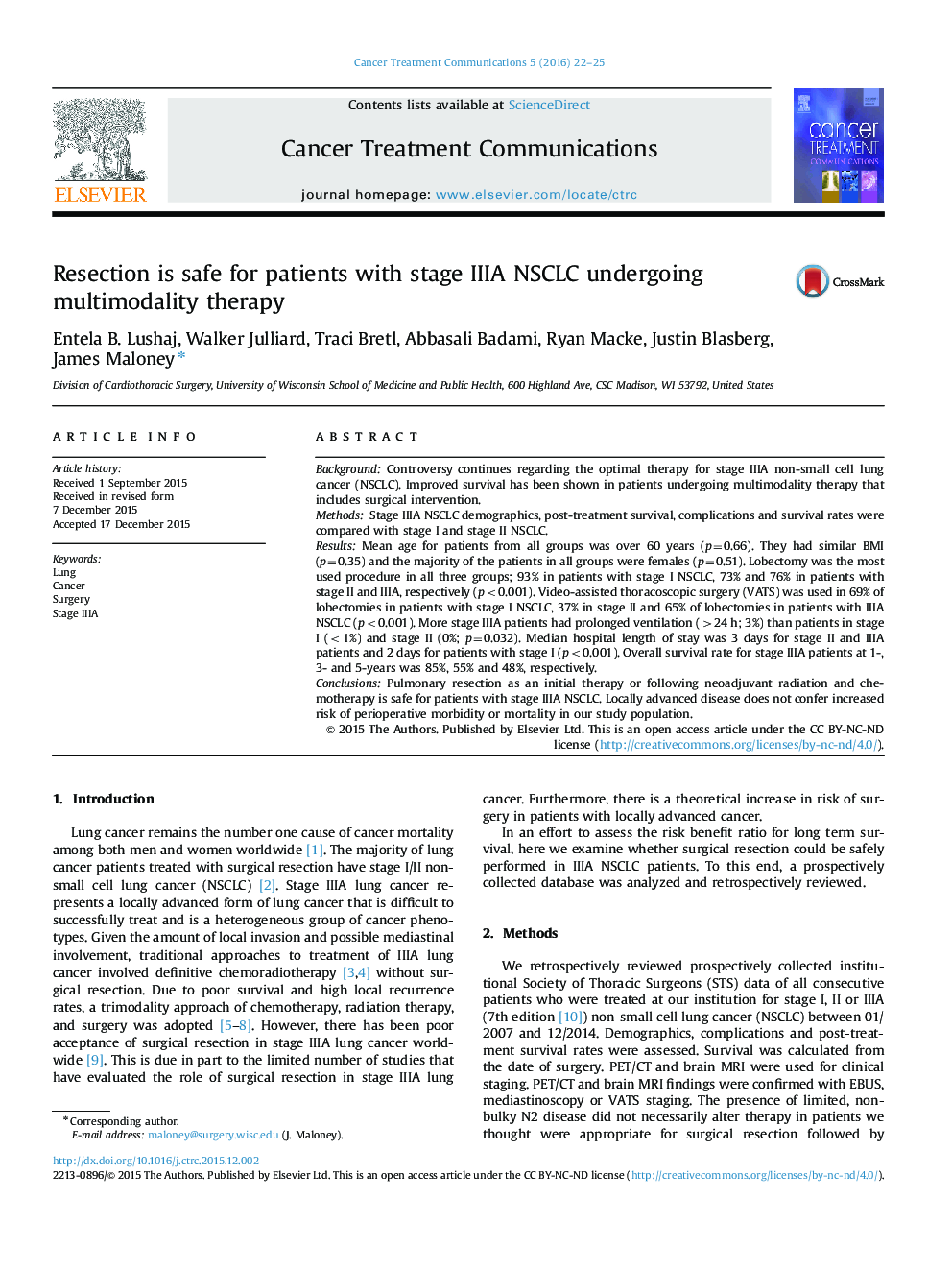| Article ID | Journal | Published Year | Pages | File Type |
|---|---|---|---|---|
| 6190211 | Cancer Treatment Communications | 2016 | 4 Pages |
BackgroundControversy continues regarding the optimal therapy for stage IIIA non-small cell lung cancer (NSCLC). Improved survival has been shown in patients undergoing multimodality therapy that includes surgical intervention.MethodsStage IIIA NSCLC demographics, post-treatment survival, complications and survival rates were compared with stage I and stage II NSCLC.ResultsMean age for patients from all groups was over 60 years (p=0.66). They had similar BMI (p=0.35) and the majority of the patients in all groups were females (p=0.51). Lobectomy was the most used procedure in all three groups; 93% in patients with stage I NSCLC, 73% and 76% in patients with stage II and IIIA, respectively (p<0.001). Video-assisted thoracoscopic surgery (VATS) was used in 69% of lobectomies in patients with stage I NSCLC, 37% in stage II and 65% of lobectomies in patients with IIIA NSCLC (p<0.001). More stage IIIA patients had prolonged ventilation (>24Â h; 3%) than patients in stage I (<1%) and stage II (0%; p=0.032). Median hospital length of stay was 3 days for stage II and IIIA patients and 2 days for patients with stage I (p<0.001). Overall survival rate for stage IIIA patients at 1-, 3- and 5-years was 85%, 55% and 48%, respectively.ConclusionsPulmonary resection as an initial therapy or following neoadjuvant radiation and chemotherapy is safe for patients with stage IIIA NSCLC. Locally advanced disease does not confer increased risk of perioperative morbidity or mortality in our study population.
